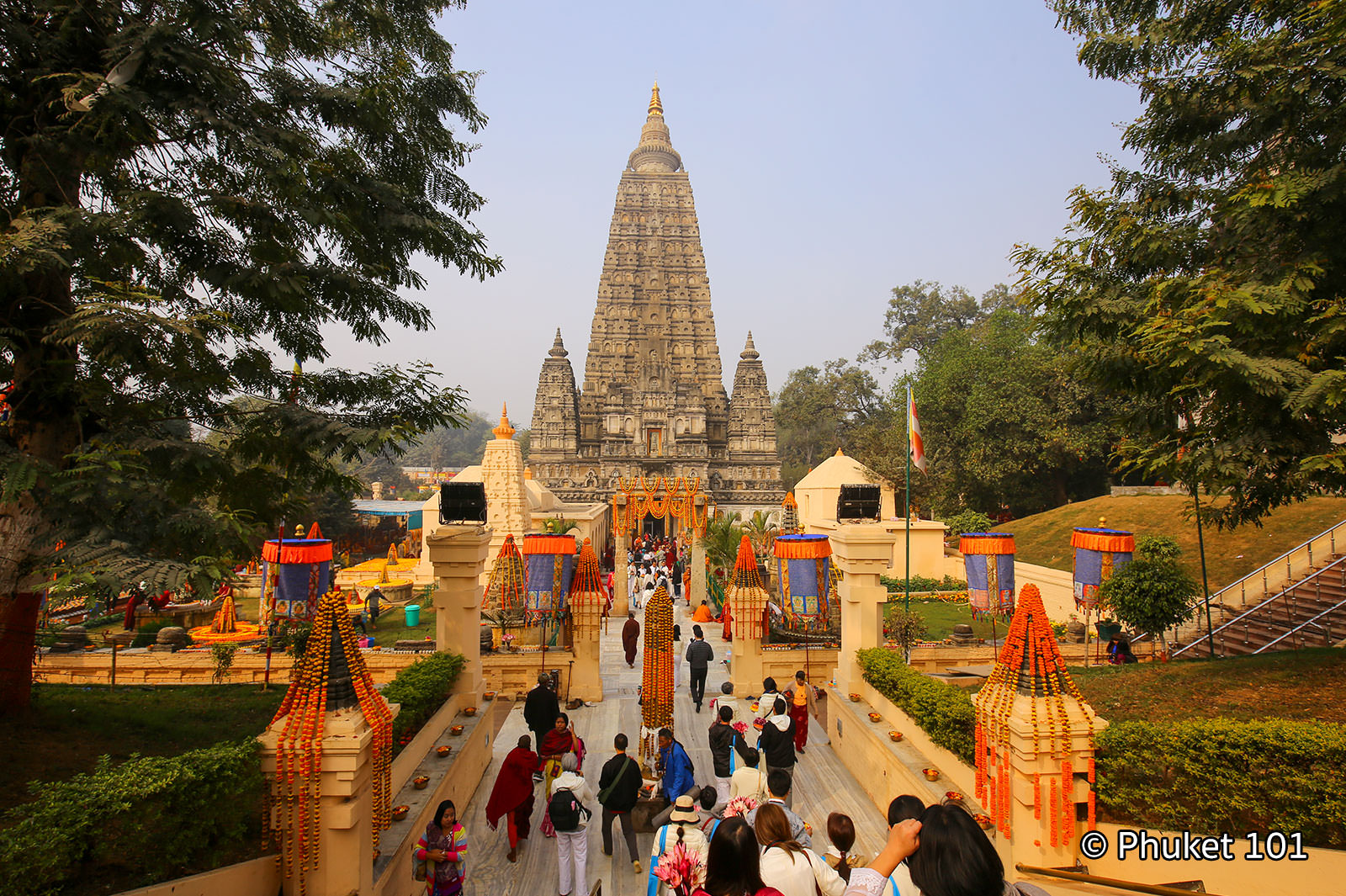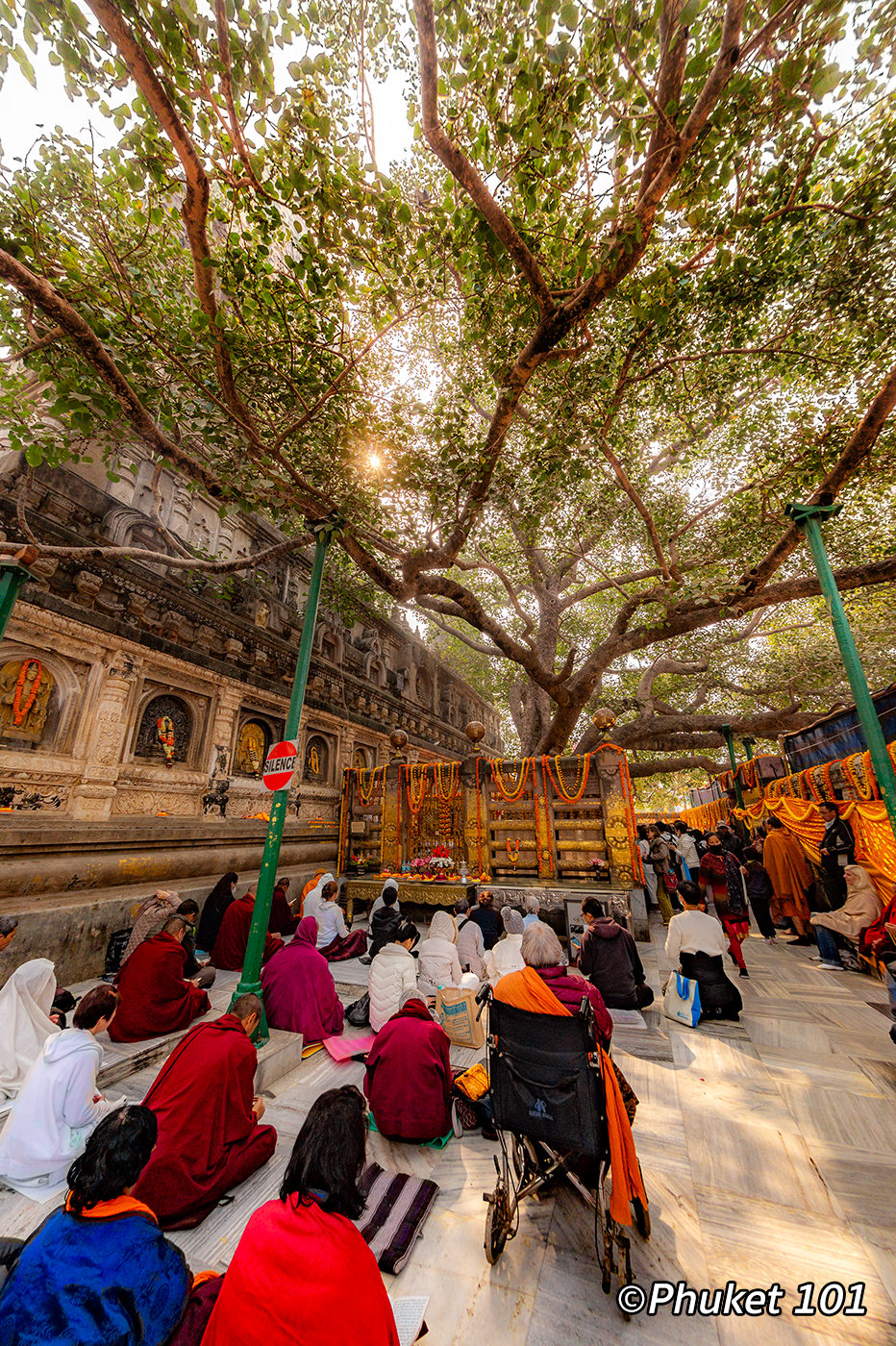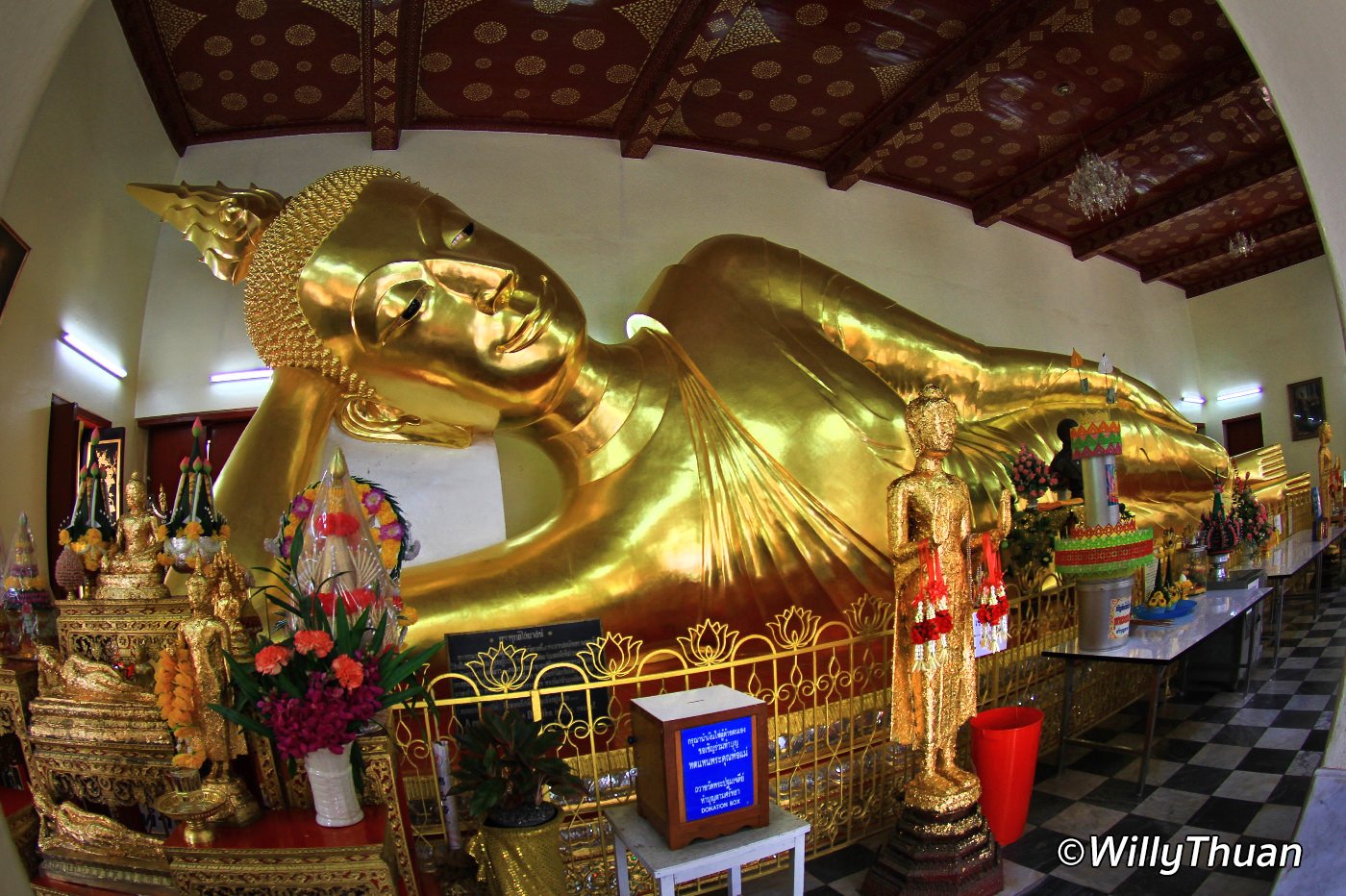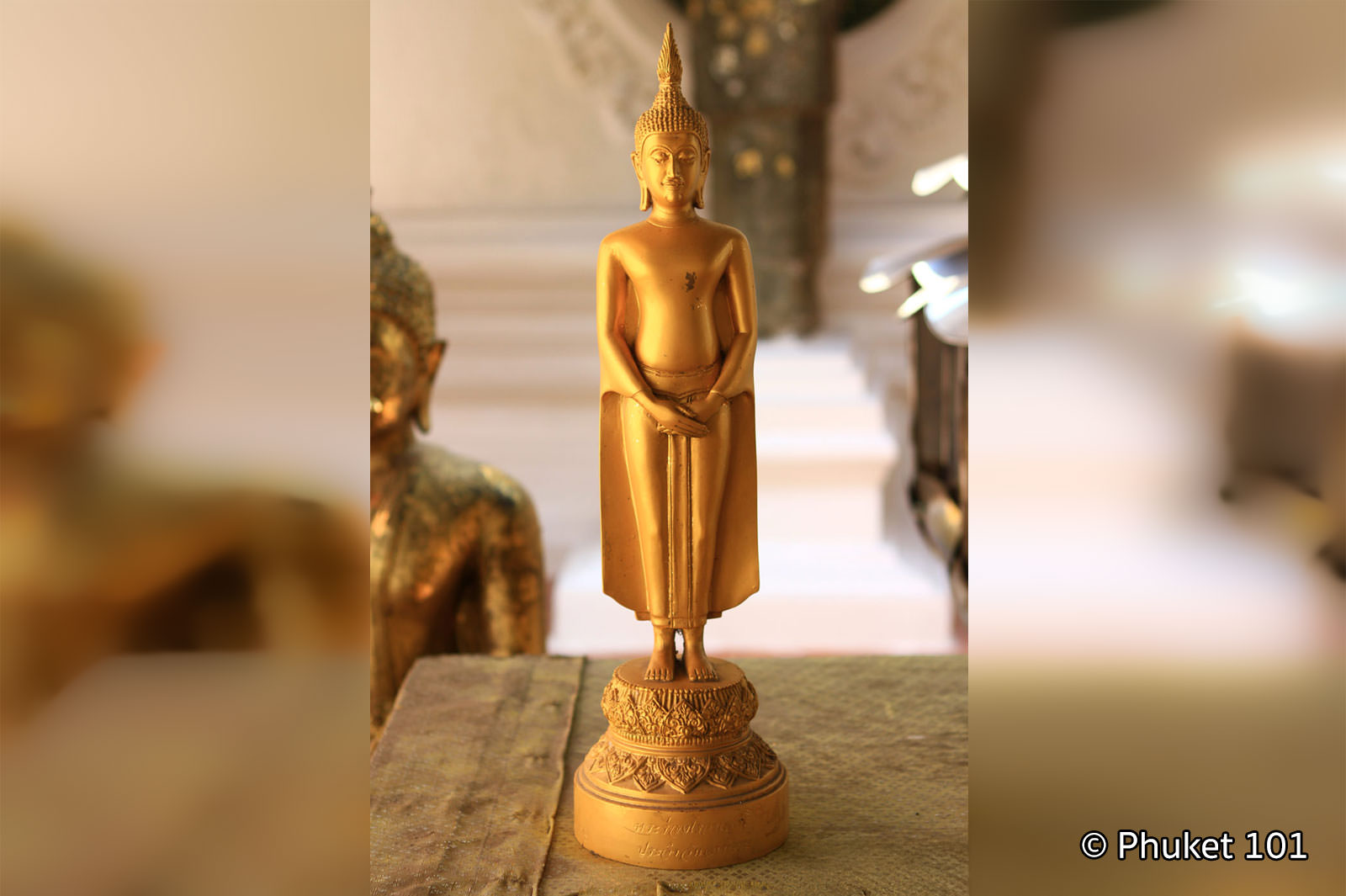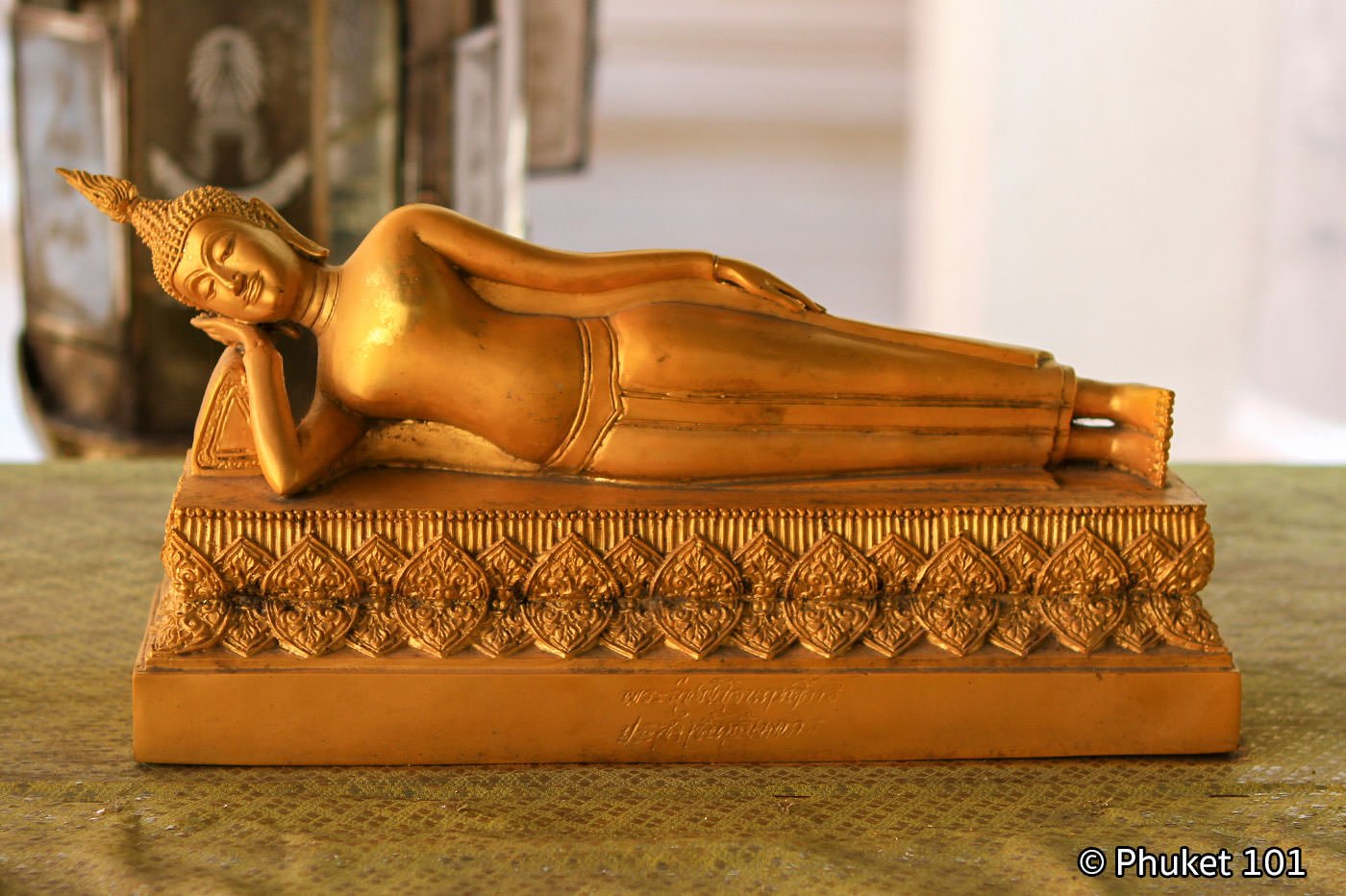Sunday Buddha Posture and Its Story
In many Thai temples, visitors notice Buddha statues displayed in different poses for each day of the week. These are known as the “Buddha postures of the seven days”, and travellers often see them grouped together with signs or donation bowls. The posture for Sunday is called the Steadfast Gaze (Pang Thawai Net). In English, it is sometimes called the “Seven-Day Gaze” or “Seven Days Looking.”
The Sunday Posture is simple but striking: the Buddha stands with both hands crossed in front, the right hand over the left, and his eyes calmly gazing forward. It is remembered as one of the episodes from the Buddha’s life story after Enlightenment.
Note: This account comes from Buddhist tradition and later commentary, not from the earliest scriptures of the Pali Canon (Tipitaka).
The Steadfast Gaze shows the Buddha standing upright, hands resting together at the waist with the right hand over the left, and eyes looking forward.
Animisa Cetiya ( Shrine of Steadfast Gaze)
Animisa Cetiya, also known as the Shrine of Steadfast Gaze or the Unblinking Shrine, is a sacred site in the Mahabodhi Temple complex at Bodh Gaya where the Buddha spent his second week after Enlightenment, constantly gazing at the Bodhi Tree.
According to tradition, this posture represents the second week after the Buddha’s Enlightenment. It is said that the Buddha stood facing the Bodhi Tree for seven days without moving, eyes open and steady, as a gesture of respect and gratitude. The place linked with this event is the Animisa Cetiya, northeast of the Bodhi Tree at Bodh Gaya in India. Pilgrims today still visit this shrine as part of the “seven weeks after Enlightenment” circuit.
Canonical Note
The Pali Canon does not describe the Buddha standing unblinking for seven days. This story belongs to commentarial tradition and was later preserved in art, teaching materials, and temple practice. In Thailand, the image became associated with Sunday in the weekly Buddha postures.
Symbolism
Over time, the Steadfast Gaze has been understood as a reminder of:
- Gratitude for the supports in life, symbolized by the Bodhi Tree.
- Patience and endurance, shown through stillness.
- Clarity of mind, suggested by the steady gaze.
These meanings are often explained in temples and guidebooks, even though most Thai people today may not connect the posture with such details in daily life. For travellers, the image is a way to reflect on values that remain relevant: calm presence, focus, and appreciation.
The Sunday Connection
In Thailand, each day of the week is linked to a different posture. The Steadfast Gaze is the posture for Sunday. Visitors may see signs or donation bowls marked “Sunday” in temple grounds. Some people born on Sunday make offerings to this image, though this practice is more common in formal or devotional settings than in everyday life.
Where to See the Steadfast Gaze
Travellers will encounter this posture in many places:
Wat Pho in Bangkok – A famous temple where the seven-day postures are lined up with signs.
Local temples across Thailand – Small shrines often display all seven (or eight, with Wednesday night) postures together, each with its own donation bowl.
Bodh Gaya, India – The Animisa Cetiya, northeast of the Bodhi Tree, is the traditional site of the Steadfast Gaze.
How Travellers Encounter It
When visiting temples, you may notice locals pausing to make a small bow (wai) or leave flowers in front of the Buddha image for their day of birth. This is a way of showing respect. Visitors are welcome to join, but it is not expected in every setting. Simply being mindful, dressing modestly, not pointing feet at Buddha statues, and moving calmly inside temple grounds—shows good manners.
The Sunday posture, the Steadfast Gaze, is less about historical detail and more about what it represents: focus, calmness, and appreciation. Whether or not you were born on a Sunday, this image offers travellers a quiet reminder to pause, look clearly, and value what sustains them.
Quick Reference Snapshot
- English name: Steadfast Gaze / Seven-Day Gaze
- Thai name: Pang Thawai Net (ปางถวายเนตร)
- Posture: Standing, hands crossed right over left at the waist, eyes steady
- Day of the week: Sunday
- Traditional account: Buddha stood gazing at the Bodhi Tree for seven days (tradition, not in the Pali Canon)
- Associated site: Animisa Cetiya, Bodh Gaya, India
- Symbolism: Gratitude, patience, clarity
Sunday Birth Personality
If you were born on a Sunday, Thai beliefs say you are:
- Respectable, wise, and well-liked by family and friends
- Likely to succeed in a professional career
- Lucky Day: Wednesday
- Unlucky Day: Friday
- Lucky Colour: Green
- Unlucky Colour: Blue

